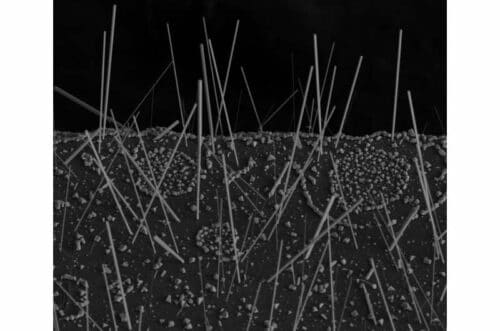These lead free perovskite crystals not only harvests energy from the sun but can switch polarity.
Solar cell uses an electric field to separate positive and negative charges to generate electricity. While manufacturing, solar cells are doped with chemicals to create a separate layer that stores positive and negative charges separately.
Researchers at UC Berkeley have found a simpler approach to solar cell manufacturing: A crystalline solar material with a built-in electric field—a property enabled by what scientists call “ferroelectricity.” This new ferroelectric material created using cesium germanium tribromide (CsGeBr3 or CGB) is inherently polarized. Crystals on one side build up positive charges and negative on the other side without doping.

Credit: Peidong Yang and Ye Zhang/Berkeley Lab
CGB is a lead free “halide perovskite,” which is easy to synthesize compared to silicon. One of the reasons to use this material is that unlike other perovskite materials it is naturally lead-free, its disposal may not cause any contamination in the environment.
“If you can imagine a lead-free solar material that not only harvests energy from the sun but also has the added bonus of having a naturally, spontaneously formed electric field—the possibilities across the solar energy and electronics industries are pretty exciting,” said co-senior author Peidong Yang.
CGB could also advance a new generation of switching devices, sensors, and super-stable memories that respond to light, said co-senior author Ramamoorthy Ramesh.
While testing the material researchers found that CGB’s light absorption is tunable—spanning the spectrum of visible to ultraviolet light (1.6 to 3 electron volts), an ideal range for coaxing high energy conversion efficiencies in a solar cell, which is rarely found in traditional ferroelectrics. Electrical measurement experiments carried out in the Ramesh lab by Zhang and Eric Parsonnet, a UC Berkeley physics graduate student researcher and co-author on the study, revealed a switchable polarity in CGB.
“This ferroelectric perovskite material, which is essentially a salt, is surprisingly versatile,” said Yang. “We look forward to testing its true potential in a real photovoltaic device.”






